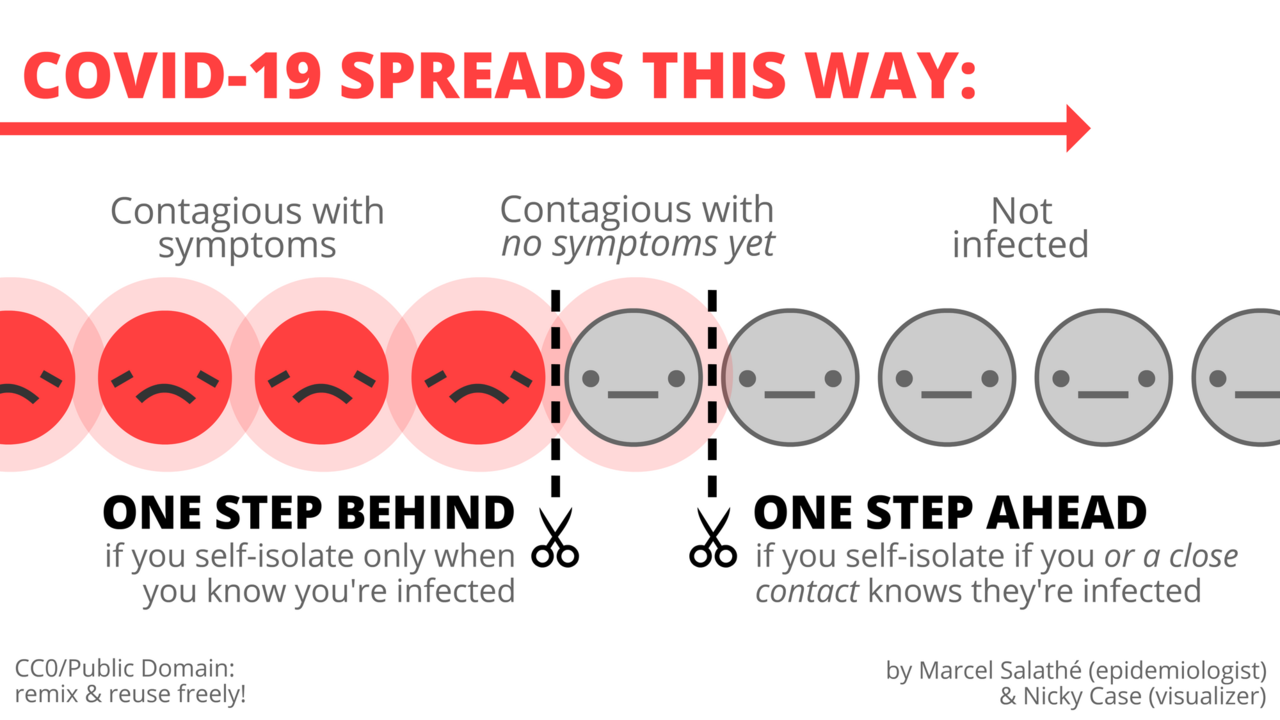Relevance: Prelims: Science

Context
• The WHO recognises three stages of COVID-19 transmission — asymptomatic, presymptomatic and symptomatic.
Symptomatic transmission
By way of definition, a symptomatic COVID-19 case is a case who has developed signs and symptoms compatible with COVID-19 virus infection. Symptomatic transmission refers to transmission from a person while they are experiencing symptoms.
Data from published epidemiology and virologic studies provide evidence that COVID-19 is primarily transmitted from symptomatic people to others who are in close contact through respiratory droplets, by direct contact with infected persons, or by contact with contaminated objects and surfaces.1-7 This is supported by detailed experiences shared by technical partners via WHO global expert networks, and reports and presentations by Ministries of Health.
Data from clinical and virologic studies that have collected repeated biological samples from confirmed patients provide evidence that shedding of the COVID-19 virus is highest in upper respiratory tract (nose and throat) early in the course of the disease.8-11 That is, within the first 3 days from onset of symptoms.10-11 Preliminary data suggests that people may be more contagious around the time of symptom onset as compared to later on in the disease.
Pre-symptomatic transmission
The incubation period for COVID-19, which is the time between exposure to the virus (becoming infected) and symptom onset, is on average 5-6 days, however can be up to 14 days. During this period, also known as the “presymptomatic” period, some infected persons can be contagious. Therefore, transmission from a pre-symptomatic case can occur before symptom onset.
In a small number of case reports and studies, pre-symptomatic transmission has been documented through contact tracing efforts and enhanced investigation of clusters of confirmed cases. 12-17 This is supported by data suggesting that some people can test positive for COVID-19 from 1-3 days before they develop symptoms.6,16 Thus, it is possible that people infected with COVID-19 could transmit the virus before significant symptoms develop. It is important to recognize that pre-symptomatic transmission still requires the virus to be spread via infectious droplets or through touching contaminated surfaces.
Asymptomatic transmission
An asymptomatic laboratory-confirmed case is a person infected with COVID-19 who does not develop symptoms. Asymptomatic transmission refers to transmission of the virus from a person, who does not develop symptoms. There are few reports of laboratory-confirmed cases who are truly asymptomatic, and to date, there has been no documented asymptomatic transmission. This does not exclude the possibility that it may occur. Asymptomatic cases have been reported as part of contact tracing efforts in some countries.
For more such notes, Articles, News & Views Join our Telegram Channel.
Click the link below to see the details about the UPSC –Civils courses offered by Triumph IAS. https://triumphias.com/pages-all-courses.php

